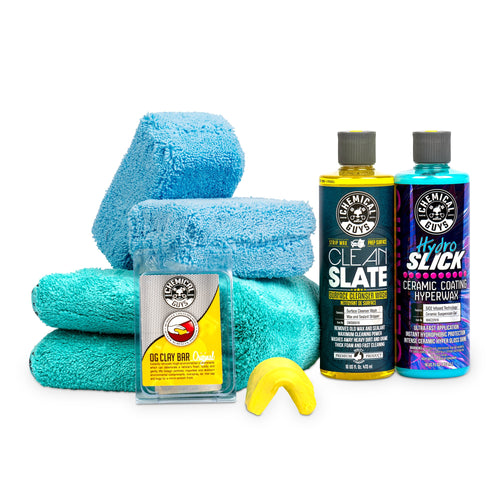Ceramic coatings do more than make your car sparkle. These advanced formulas bond directly to your paint, forming a slick, durable barrier that helps repel damage, reflect sunlight, and keep your ride looking sharp between washes. Here’s what that protective layer does for your paint, shine, and long-term upkeep.
Blocks Harmful UV Rays That Fade and Dull Paint
Sun exposure wears down paint over time. Fading, oxidation, and discoloration show after months of heat and light exposure in warmer climates or on darker-colored cars. A ceramic coating acts like a sunscreen for your finish. It reflects UV rays before they can break down the clear coat, helping your paint hold onto its depth and color for the long haul.
Defends Against Dirt, Tree Sap, and Road Grime
Daily driving exposes your vehicle to various hazards – gritty debris, bug guts, pollen, tree sap, and even fallout from sprinklers or construction sites. Once cured, ceramic coating creates a slick surface, making it harder for these contaminants to stick. When they do land, they rinse off more easily during your next wash, saving you time and elbow grease.
Helps Water Bead and Roll Off Smoothly
Once applied, ceramic coatings give your car a hydrophobic surface. That means water beads on contact and slide off instead of pooling or leaving spots. Fewer streaks mean fewer touch-ups and headaches after a rainstorm. Additionally, washing also gets faster since you’re not scrubbing stuck-on grime from every curve and panel.
Locks in a High-Gloss Shine That Turns Heads
Besides protecting your paint, ceramic coatings help bring out its depth and clarity. The formula lays down a thin, glass-like layer that amplifies gloss and reflects light across every surface. Whether you’re detailing a daily driver or dialing in a show car, that finish adds a sense of polish that gets noticed from across the lot.
Wax vs. Sealant vs. Ceramic Coating: What's the Difference?
Choosing the right paint protection starts with knowing what each product offers. Wax, sealants, and ceramic coatings protect your vehicle, but they work differently and wear at their own pace. Here's how each one stacks up.
Wax Delivers a Soft Shine and Short-Term Protection
Carnauba wax is a classic detailing go-to. It creates a rich, warm glow that looks great in direct light and gives your paint a silky finish. Waxing is hands-on in the best way – apply it evenly, let it haze, and then buff until your paint feels smooth and looks glossy. However, that smooth finish doesn’t last forever. Most waxes hold up for one to two months before the shine and water resistance start to fade, and frequent washing, hot sun, and road grime all take a toll.
Sealants Stay Slick Longer and Protect Against Daily Driving Hazards
Paint sealants use a synthetic formula that bonds to the clear coat. You’ll get a tighter, more durable layer that lasts up to six months. Most sealants resist water, UV rays, and grime more effectively than wax, making them a better fit for cars that live outside or see more miles. Overall, sealants strike a balance between ease of use and longevity, and for detailers who want better protection without going all-in on a ceramic job, this type of product checks the right boxes.
Ceramic Coatings Form a Long-Term Barrier with Hydrophobic Power
Ceramic coatings take surface protection to the next level. These formulas bond molecularly, creating a solid, glass-like layer that locks onto your paint. Water, dust, sap, and other contaminants have a harder time clinging to the surface, which makes cleaning faster and easier.
The shine from a ceramic coating is deep and crisp, with a slick feel that holds up for months, sometimes longer. With proper care, some products can last for over a year. The application requires more prep and patience, but the payoff includes serious durability, boosted clarity, and stronger resistance to sun and grime.


